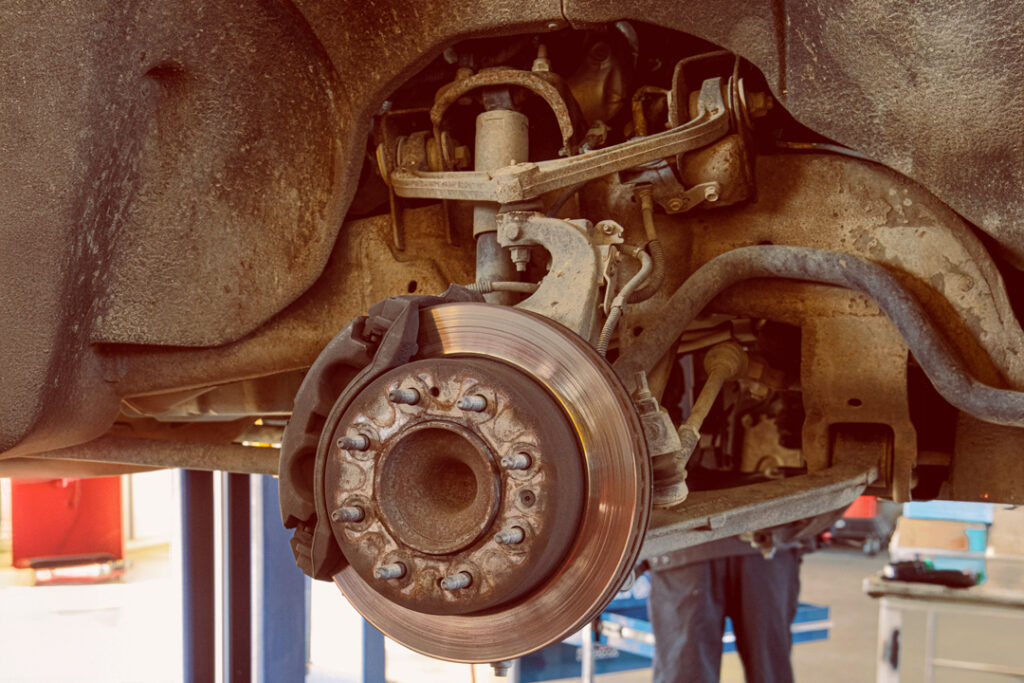If you’ve spent any time driving through Denton, you know the roads aren’t always the smoothest. Between all the construction zones, unexpected dips, and rough patches, your car takes more hits than you might realize. Most folks notice the toll on their tires first, but there’s another set of parts quietly doing damage control every time you hit a bump: your shocks and struts.
These components play a big role in how your car handles, rides, and even stops. And while they don’t fail overnight, they do wear down gradually. That’s why it’s important to know what to look for and when it might be time to get them checked.
What’s the Difference Between Shocks and Struts, Anyway?
Before we dive into the signs of trouble, it helps to understand the difference between shocks and struts because even though people tend to lump them together, they’re not exactly the same thing. Shocks, or shock absorbers, are designed to control the bounce and rebound of your suspension. They don’t necessarily support any weight; they just keep your car from bouncing around after going over a pothole or making a turn in the road.
Struts, on the other hand, are a bit more involved. They actually are part of the structural system that supports your vehicle’s weight, and they usually come as a complete unit with a coil spring. So while both help you stay in control on the road, struts do a little more heavy lifting, literally. Depending on your make and model, your car might have shocks in the back and struts in the front, or all four corners could be the same.
How Everyday Driving Leads to Suspension Wear
Every time you brake hard, roll through a dip, or swerve to dodge a pothole, your shocks and struts absorb the force to help stabilize your vehicle. And over months of daily driving in these conditions, that can add up.
Driving conditions like this mean you might start to feel the wear sooner than expected. It’s not always about mileage, it’s about what kind of miles your car is going through.
How Shocks Start to Fail
Here are some more nuanced signs and scenarios to explore beyond bouncing signs of your vehicle:
- Diminished handling: Your steering may start to feel loose, or the car might sway more during lane changes or while turning.
- Uneven tire wear: Worn shocks can cause the tires to lose consistent contact with the road, leading to patchy tread patterns or cupping.
- Fluid leaks: If a shock is leaking hydraulic fluid, it’s no longer able to do its job properly and that’s a clear sign it’s time to replace it.
- Noisy suspension: Knocking or rattling sounds when driving over imperfections could point to failing shock mounts or worn bushings.
What Happens When Struts Wear Out
Here are the strut replacement signs:
- Changes in ride height: A worn strut can cause one corner of your vehicle to sag slightly, throwing off your alignment and increasing tire wear.
- Vehicle drift: If the car pulls or drifts when driving straight or braking, worn struts may be the reason, not just an alignment issue.
- Compromised safety: Because struts are a structural part of your suspension, they can directly affect braking distance and vehicle stability, especially in emergencies.
What Else Wears Out When Shocks and Struts Do?
When your shocks and struts start to go, they can take a few other things down with them.
For example, you might notice the front of your car dipping more than usual when you brake, or that your tires feel like they’re losing grip during rainy weather. Over time, you could even start feeling small vibrations through the steering wheel or dashboard, especially on uneven pavement. These are signs that your shocks aren’t doing enough to keep your tires planted and your cabin isolated from road feedback. You might also feel the difference when driving through parking lots or over speed bumps and if your car bounces more than once or feels unsettled after.
And when it is time for replacement, we get a lot of questions like:
- Can you replace just one?
Technically, yes, but it’s not recommended. Replacing only one shock or strut can throw off your vehicle’s balance. Most shops will suggest replacing them in pairs to keep things even and predictable. - Do front and rear matter?
Yes. Front and rear suspensions often wear at different rates and serve slightly different functions. Your vehicle might only need front replacements or both depending on how it’s been driving. - What if I wait too long?
You’ll usually feel a change in handling or braking before things get dangerous, but letting suspension issues drag on can lead to damage in other systems (like wheel bearings, tires, and steering components). Plus, it usually costs more to fix when you wait.
Need Your Shocks or Struts Checked? Let’s Take a Look
If you’ve been noticing any of the signs we mentioned, it’s a good idea to swing by and let us take a look. You don’t have to know exactly what’s wrong; that’s what we’re here for. Our ASE certified mechanics can check out your shocks, struts, and anything else that might be affecting your ride. We’ll walk you through what’s going on and help you figure out the next steps. Keeping your car in shape shouldn’t be stressful, and we’re here to make sure it isn’t.

